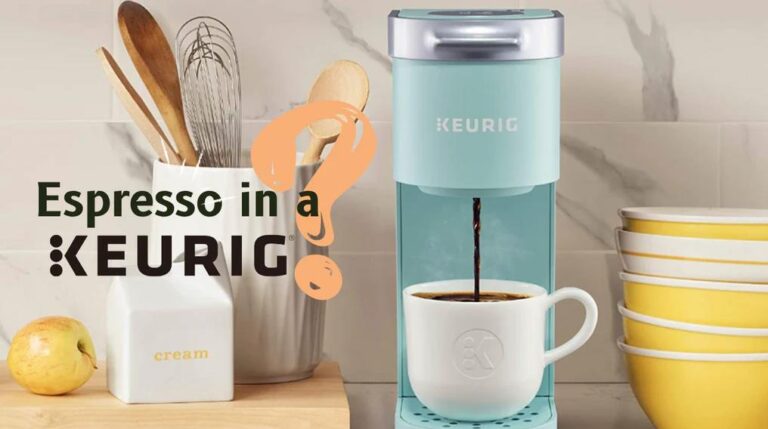How to Make Coffee from Coffee Beans
So much of our lives revolve around coffee that we sometimes take it for granted.
The truth, however, is that each coffee bean travels a long way, meets a lot of people, and goes through many processes before finding its way into your cup. Here’s to its journey.
Planting The Seeds
You can’t just plant some seeds and come back a few years later and expect coffee to flourish.It’s not even the coffee plants that grow in the field that we begin our journey from seed to cup! Some green coffee beans are kept to plant next year’s coffee trees.
In the early growth stage, these seeds are planted in nurseries and carefully watered.
They can tolerate full exposure to the sun when they reach 18 to 24 inches, at which time they are removed from the nursery and planted in the field.
Usually, it takes three to five years for a coffee tree to produce the cherries due to their shape and color.A bright, deep red skin covers the fleshy pulp, which has two tiny coffee beans encased in protective skin.
Harvesting
In agriculture, harvesting is a community affair, with everyone getting involved to help with the picking. Though berries have a general ripening period, they often ripen in stages, making it impossible to pick the whole batch at once.
Processing Green coffee
After harvesting, cherries are processed quickly to prevent spoilage. The following two methods are used, depending on resources and location.
The dry method
They are then sorted and cleaned (often by hand) and laid out to dry in the sun on the concrete, brick patios, or raised mats. They are frequently raked or turned by hand by moving the cherries onto the driest surface and preventing fermentation, mold, and mildew. Drying can take up to four weeks.
In addition to defective beans, coffee that is too dry may be attacked by fungi and bacteria. To separate the seeds from their coverings, the dried fruits are mechanically hulled when the water content reaches 12–13 percent. When harvest time falls in humid regions with heavy rain and humidity, the dry technique is impractical.
The Wet Method
Coffee cherries can be skinned using this relatively new method. Throughout the process of extracting the beans and moving the fruits, water is used to both move the coffee fruit and keep it moving. Just as in the first method, cleaning the cherries and removing unripe and overripe fruit is another step of the wet method.
Cherry pulp is extracted by squeezing the skin of the beans without damaging them. The coffee bean’s hardness makes this possible. Those still having the pulp on are not ripe.
Lower quality coffee is produced from these beans. They’re hand-sorted and used to make less expensive coffee. During the pulping process, mucilage is left over, and it is disposed of through enzymes in tanks. Large tanks of beans are stirred constantly to ensure the mucilage dissolves completely.
To ensure the beans maintain their original flavor, all the mucilage has to be removed before this processing. This process takes around 24 hours. It is then repeatedly washed to remove any remaining stickiness after it has dissolved. A few days later, the beans are exposed to the sun for drying. Drying can be mechanized as well. After the coffee beans are sorted into different grades, they are taken outside of the processing facility and are known as parchment coffee.
Tasting The Coffee
Once the coffee beans have been harvested and processed, a select group of individuals will be able to sample the harvest. In addition to the visual inspection of the green coffee beans, a sample will be roasted and ground for tasting. To judge the coffee’s aroma quality, a taster first smells it, or a cupper. How good the coffee tastes is highly influenced by its smell.
In addition to finding flaws in a coffee, taste-testing helps determine which beans will blend well together.After the beans have been tasted, they can now be exported to roasters akin to fine art.
Roasting
Roasting coffee is an important part of the entire journey. Green coffee beans undergo a thorough process to be transformed into the divine wholesome beans we enjoy at home. Most coffee roasting is done by professionals, but some serious coffee drinkers roast their beans.
Here are the different stages of the coffee roasting process:
Pre Heating. Roasting beans need to be roasted at about 400 F before being placed in the drum. There are a variety of roasting methods and machinery that affect the temperature.
Drying. Having entered the roasting machine, the beans are now absorbing heat. As the water inside the beans evaporates, steam will start to form.
Aromas and Sounds. During the roasting process, the sugars inside the beans start to caramelize, steam is released, and the famous “first crack” can be heard. This means that the beans are ready for grinding and for use in making coffee.
- Coffee beans roasted to a light roast do not have oil on the surface. They are a light brown color.
- Beans that are medium roast are a medium-light brown when they are revealed after their first crack.
- These roasts produce charred black beans that are heavily coated with oil. Dark roasts result from a second crack. The color of the roast varies from dark brown to nearly black, depending on the temperature of roasting.
Coffee Grinding
There is nothing more satisfying than the sound of fresh beans grinding, but grinding beans requires careful attention and patience. A stovetop espresso machine or a stovetop espresso pot will require a fine to super fine grind.
Grinding determines the speed at which the coffee can release its flavor. Espresso coffee is very finely ground for this reason. As opposed to this, coffee prepared with a filter coffee maker is coarse.
A grinder would be an excellent addition to any kitchen. I’ve noticed a significant improvement in coffee quality since I stopped buying preground coffee. You must take a little more time, but you will become more aware of the flavor. Nothing really good comes easy!
COARSE GRIND
MEDIUM GRIND
FINE GRIND
Packaging
A coffee package is extremely important, as any exposure to air could make it lumpy. In particular, ground coffee quickly loses its flavor when exposed to air. Coffee is usually packed in airtight containers and must be resealed carefully when not being used.
Conclusion
The process of processing coffee requires a lot of human labor. Making the right cup of coffee requires skill. Branded coffee therefore cannot be dismissed.






